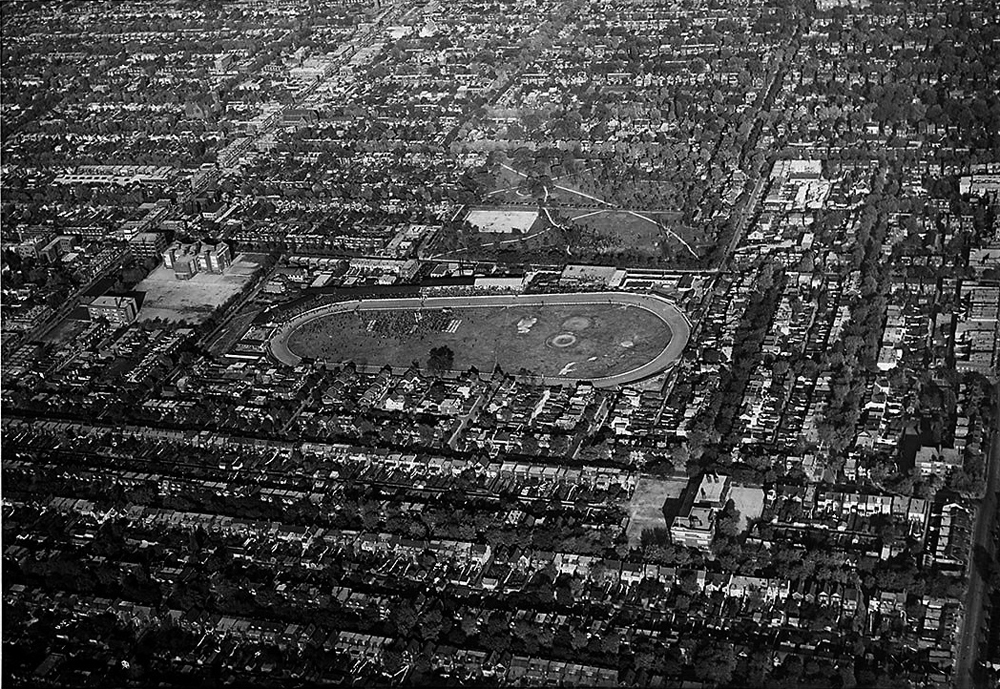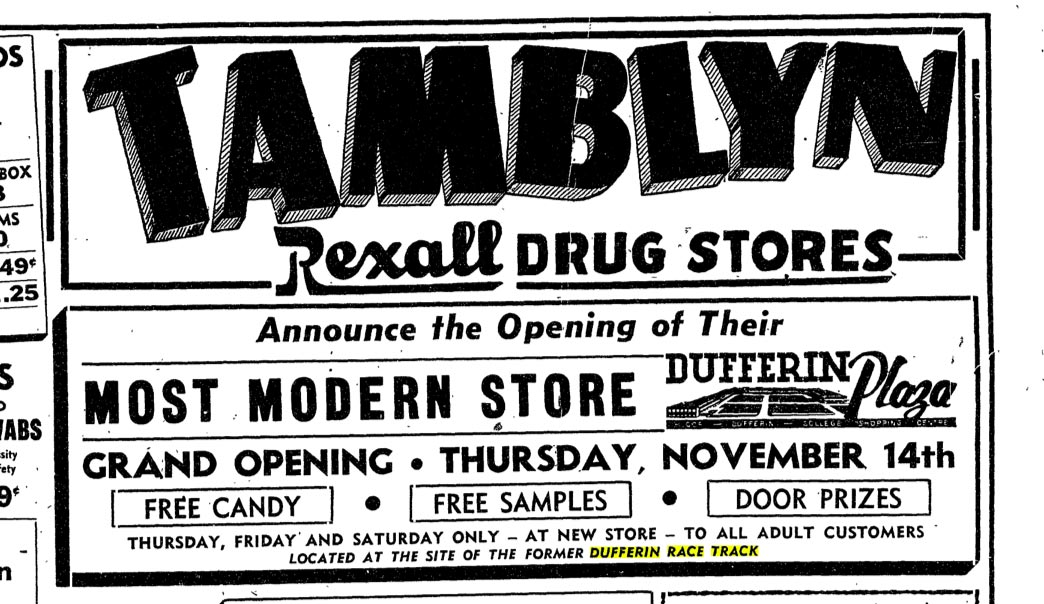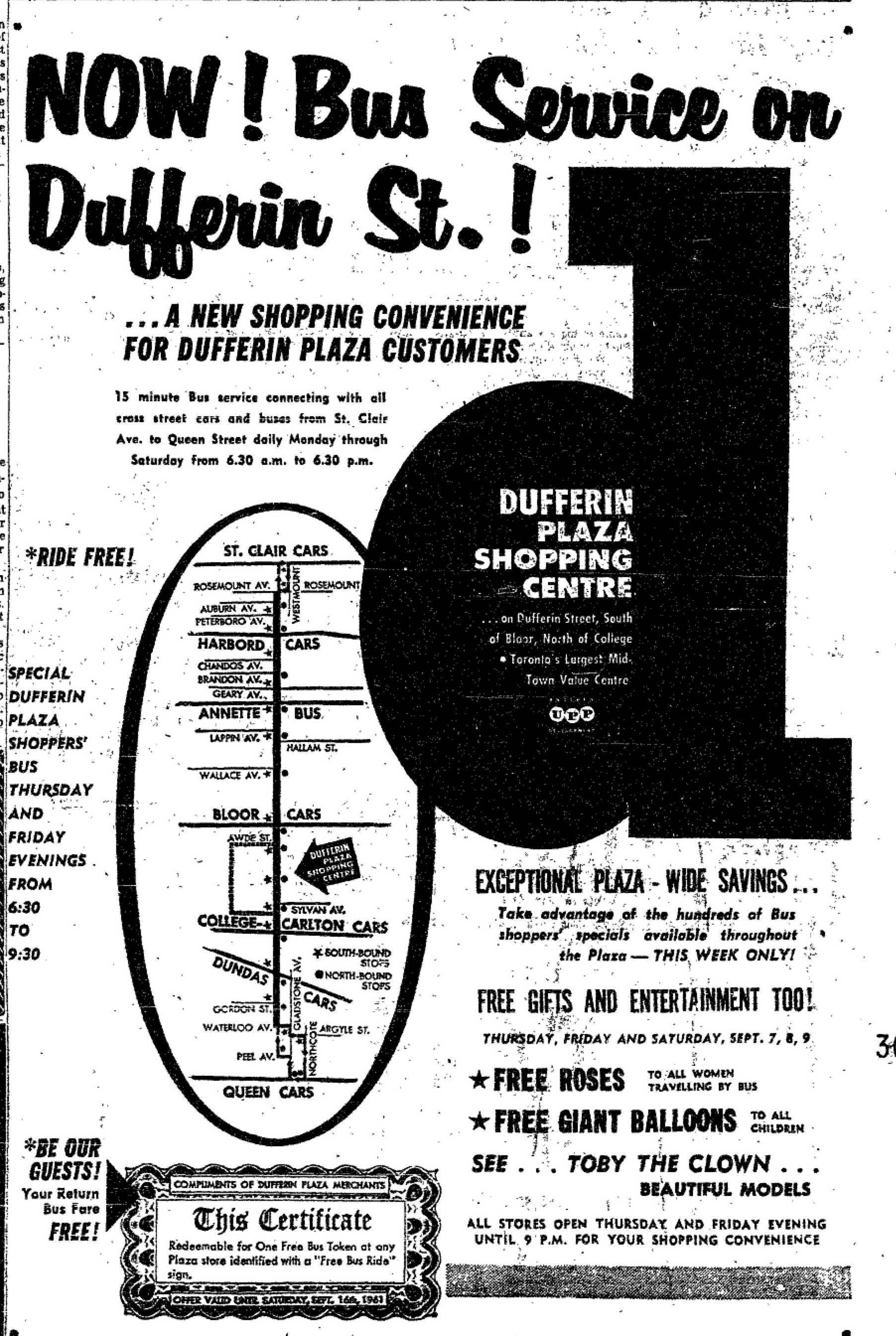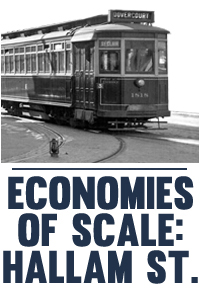As has been noted, before the late 1940s the intersection of Hallam St. and Dovercourt Rd. was like the central crossroads in a small town. While a concentration of small businesses existed there, additional stores were dispersed all along Hallam and up and down Dovercourt. These included restaurants, grocery stores, butchers, beauty salons, a funeral parlour, florists, shoemakers, appliance repair stores, laundries and even a movie theatre. Easily accessible transit courtesy of the two streetcar lines took residents downtown for any shopping needs not met in the neighbourhood.
In the postwar period, with the growth of the suburbs, suburban concepts such as strip malls and concentrated, off-street shopping centres were imported into urban areas. The arrival of the Dufferin Plaza Shopping Centre in 1956 (supplanting a former horse-racing track that had been in existence since 1907) had a significant effect on local businesses over the following decades. In the 1970s the Dufferin Plaza was renamed the Dufferin Mall and was enclosed.\ In addition, another enclosed mall, the Galleria Shopping Centre, opened in 1972 at the corner of Dupont and Dufferin Sts. The existence of these two malls exerted major pressure on the small businesses and services dispersed around the axis of Hallam and Dovercourt. In describing the customer reach of the Dufferin Plaza a 1971 City of Toronto Planning Board report on the Bloor-Dufferin area of Toronto (Hallam St. is only two blocks north of Bloor) states “Despite ample off-street parking, the centre does not appear to attract customers from very far beyond the study area.” The implication is that the customers who once would have insured the economic viability of Hallam St. began to go to the mall instead.
If one examines the section of this website that deals with the timelines of the stores along Hallam St. it is apparent that, beginning in the 1970s, both the diversity and number of active stores begins to diminish.






